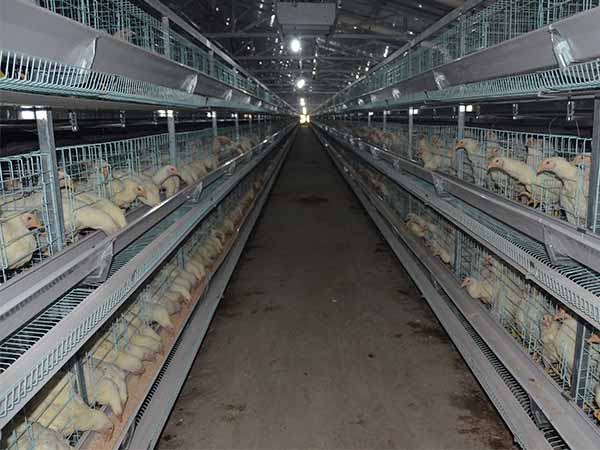The chicken houses of large-scale farmed chickens poultry farming cage are all about a suitable temperature, space, etc., so that the chickens raised are relatively healthy. Sometimes the ventilation is large, and the temperature of the chickens is rapidly decreasing, which is called cold cold, and ventilation. Small will also cause some trouble to the chicken. The ventilation is correct, the way of entering the wind is wrong, and the flock also produces the respiratory tract. The way is wrong, mainly caused by the wrong amount of air in the unit time.
In fact, the somatosensory temperature of the chicken is related to the temperature of the chicken house. First, the outdoor humidity is too low, and second, the outdoor temperature changes too much. Humidity is an influence indicator of the somatosensory temperature. The humidity does not increase or decrease by 1%, and the temperature of the body feels a temperature difference of 0.2.

The temperature of newborn chicks is between 39.4 °C and 41.1 °C, and the body weight is about 32-42 g. The body surface area is larger than that of body weight. The hair is relatively small, the heat preservation capacity is poor, the feed intake is small, and the energy production capacity is also poor. . If the ambient temperature of the house is not properly controlled, for example, the ambient temperature is lower than the optimum temperature, it can be seen that the chicks eat more and the heat production increases, that is, the metabolic needs of the chicken increase, the feed conversion rate decreases, the oxygen demand increases, and even when severe Lead to the occurrence of disease. On the other hand, if the ambient temperature of the chicken house is higher than the optimum temperature, it can be seen that the chicks eat less material, drink more water, drain loose stools, have insufficient nutrient digestion, accelerate breathing, and have imbalanced metabolism in the body. As the chicks age, the chicks eat more, the body weight increases, the feather coverage increases, the feather insulation capacity and the energy production capacity in the body are continuously enhanced. After the chicks were 28 days old, the feathers began to grow, the body temperature regulation mechanism began to improve, and gradually began to adapt to the external environment.
It is important to note that the appropriate temperature range for broilers in Poultry Rearing Equipment is the effect of receptor weight, ventilation (wind speed), feed intake, relative humidity and ambient temperature. In particular, we must emphasize the temperature of the chicken's body temperature. The humidity in the house is different from the wind speed, and the temperature of the chicken is different. Therefore, the target temperature must be set according to the age (body weight), actual humidity and wind speed of the flock.
